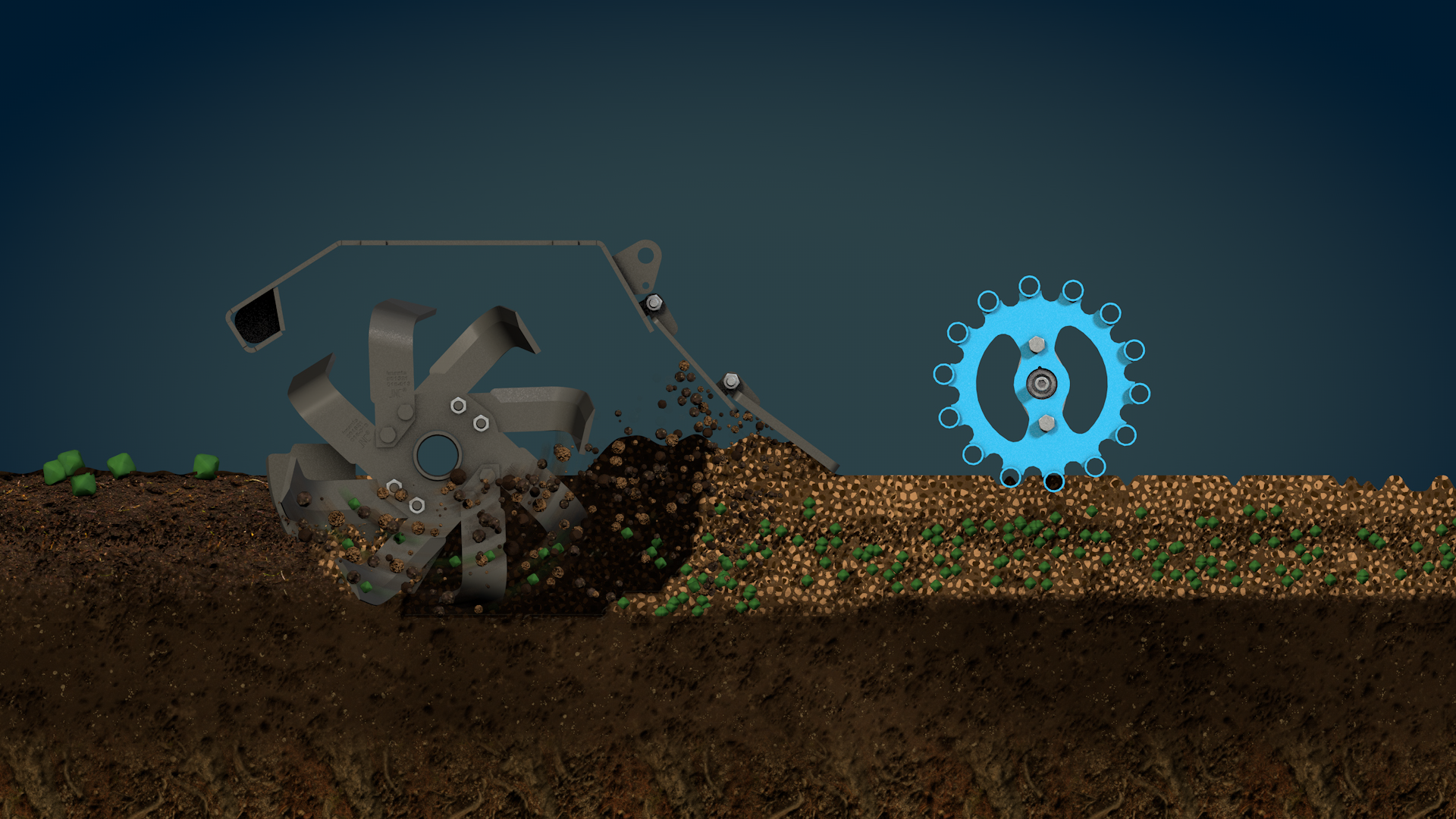JNC Rotavators
JNC rotavators
With over 135 years of experience, Imants can
safely say that it has learned how to optimize
tillage. The Imants rotavators are no exception.
With a quick rotating movement, working green
manure or crop residues superficially and
making the soil very fine, that is milling.
Imants JNC rotavators are unique in their kind due to the center drive.

Imants JNC rotavators are unique in their kind due to the central drive. As a result, the working width and transport width are equal and the soil is also loosened in the middle. Because there is neither a drive nor a skid on the side, the machine sinks evenly into the ground over the entire width. This is in contrast to a rotavator with a skid which runs on one side on top of the raw soil and on the other side sinks into the treated soil. This creates a skewed milling pattern with a ridge on the side.
This so-called “tile profile” has a negative effect. Finally, the lack of a side drive means that the JNC rotavator can work very close to obstacles. Think for example of the posts in a greenhouse.

Imants has 2 types of rotavators in its range.
A standard rotavator and an overtop rotavator
. The Imants standard rotavators work the soil
using Imants rotavator blades that rotate in the
direction of travel.
These self-cleaning rotavator blades have a special position that ensures that no rotavator sole is created. The Imants rotavator blades are made up of flanges. One flange consists of four Imants rotavator blades. The number of flanges varies according to the working width.
Overtop Rotavators
Imants overtop rotavators work the soil by using
Imants blades. These self-cleaning blades have
a special position which ensures that no milling
sole is created.
The Imants rotavating blades are made up of
flanges. One flange consists of four Imants
blades. The number of flanges varies according
to the working width. The overtop rotavators
rotate against the direction of travel while the
regular rotavators rotate in the direction of travel.
The self-cleaning blades have a special position that ensures that no milling sole is created.
Because these rotavators rotate against the direction of travel, the soil is thrown against a bar rack. Clods (and possibly stones or crop residues) are forced down by this bar rack, while fine soil is thrown through the bar rack. The result is that the soil is deposited even finer and in 1 working passage a clean seedbed is made.
Read more

Want to know more?
Contact us.
Call +31 (0)497 - 642 433 or mail to info@imants.nl.